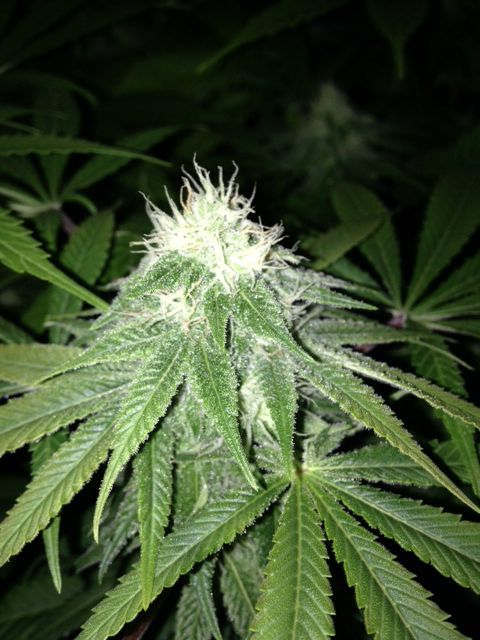Does anyone input any spikes in EC @ peak flowering? Or alter the ratio of your nutrient?
Last edited:
Does anyone input any spikes in EC @ peak flowering? Or alter the ratio of your nutrient?
Along the lines of TTs question. Once EC spikes in flowering do you guys water it down? I've been inputting a 600EC for 6 weeks or so now to keep the system EC at ~1850. 6 weeks....looks like it would have fell off by now. Btw I'm running a perpetual.[/]
Because I never watch my solution I don't know if it's spiked, if it has, I have never done anything to correct it and I have still had no trouble
Hydroponic literature I am currently reading suggests "nutrient solution should rise to within about one inch of the surface of the aggregate" (Hydroponic Food Production). Reason: "This practice keeps the aggregate surface dry, preventing the growth of algae, reduces water loss, and humidity build up at the base of the plants. It also prevents the growth of roots into the surface inch of the aggregate, which, under coniditions of high light intensities, may become too high in temperature for satisfactory root growth"
So, it appears that it would be advantageous to implement an overflow pipe 1" from the surface which would drain into the reservoir bucket, and would not require an individual to constantly regulate the flow of each site, confident all flood to the ideal level.
Thoughts?
Here goes the first week of flower, they just keep growing, there's no stopping these girls...
View Image

update on these fine looking ladies grow4flow if u could sir be much appreciated by all im sure


So, it appears that it would be advantageous to implement an overflow pipe 1" from the surface which would drain into the reservoir bucket, and would not require an individual to constantly regulate the flow of each site, confident all flood to the ideal level.
Thoughts?
but pathogens thrive in oxygen rich solution.
 .
."what i do think will blow the plant up is direct o2 injection into the root zone between pulses. i'm thinking about ways to do that now." (Demonic Deluge #227, d9)
Is anyone aware if d9 developed a way to do this? Did he give this pursuit up in later posts?
Real world experience has taught me otherwise. I observed pathogens in systems with air air bubblers or stagnant reservoirs exposed to the air. In designs like a hempy bucet, I've never experienced pathogens in the solution zone.
It's proven science that the bacteria/pathogens that cause root rot, etc cannot survive in a high o2 environment. What your real world experience has taught you is that you were not injecting enough air, and secondly that air bubblers are a terribly inefficient way to do it in the first place.
One theory about why hydroponics yeilds more is because supposedly the increased oxygen increases transpiration which is correlated with higher yeilds. Now there are good studies that conclude transpiration = yield. On the contrary, there are good studies that conclude less transpiration can result in a greater yield with the application of chitosan which increases ABA levels. Transpiration may be hindered, but at the same time a closed stomata is significantly more protected from pathogen attacks.
 .
.What about an excessive demand for transpiration? Aka water stress...When air is a combination of too hot and dry above ground, a plant can not keep up with the amount of transpiration required. Plant growth is more strongly correlated with light. We all know how more light comes at the cost of more heat and drier air, but we still get bigger plants overall... Chitosan reveals that transpiration does not bottleneck photosynthesis.
Feel free to look into foilar applications of chitosan and associated decreases in transpiration, less time to mature, and increases in yield with reduced instances of pathogen infections. Some twin studies were done in fields along with completely concealed growth chambers. I understand this challenges more conventional wisdom.
 .
.